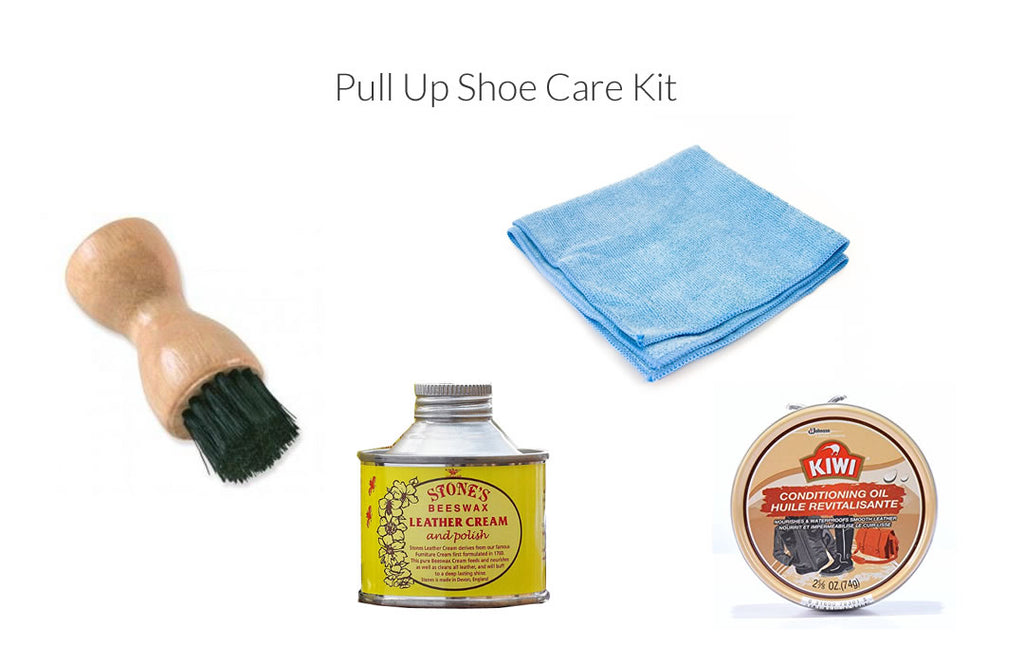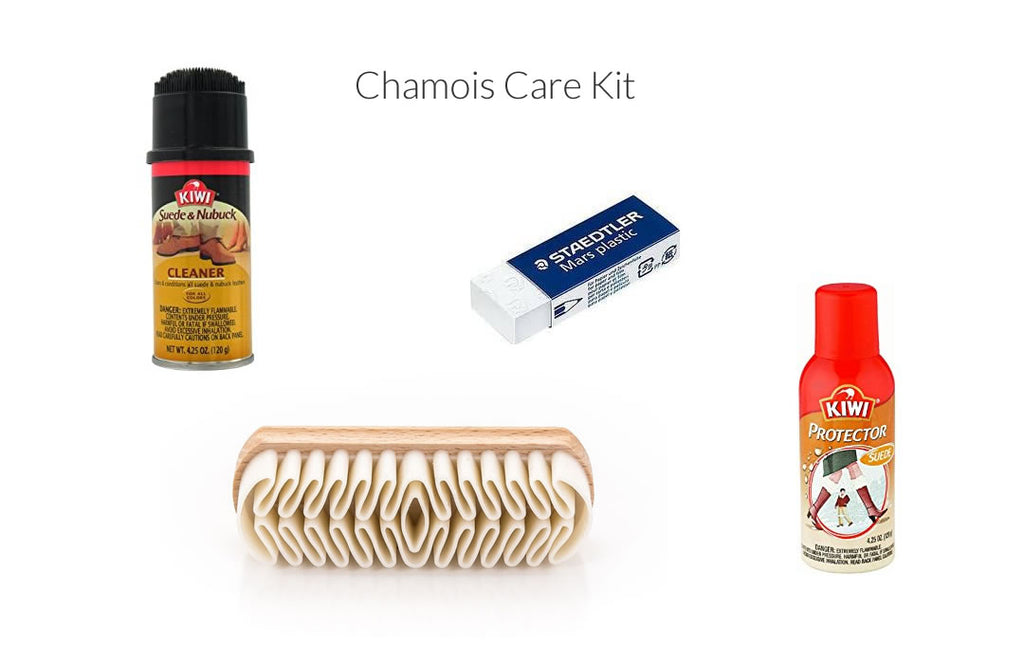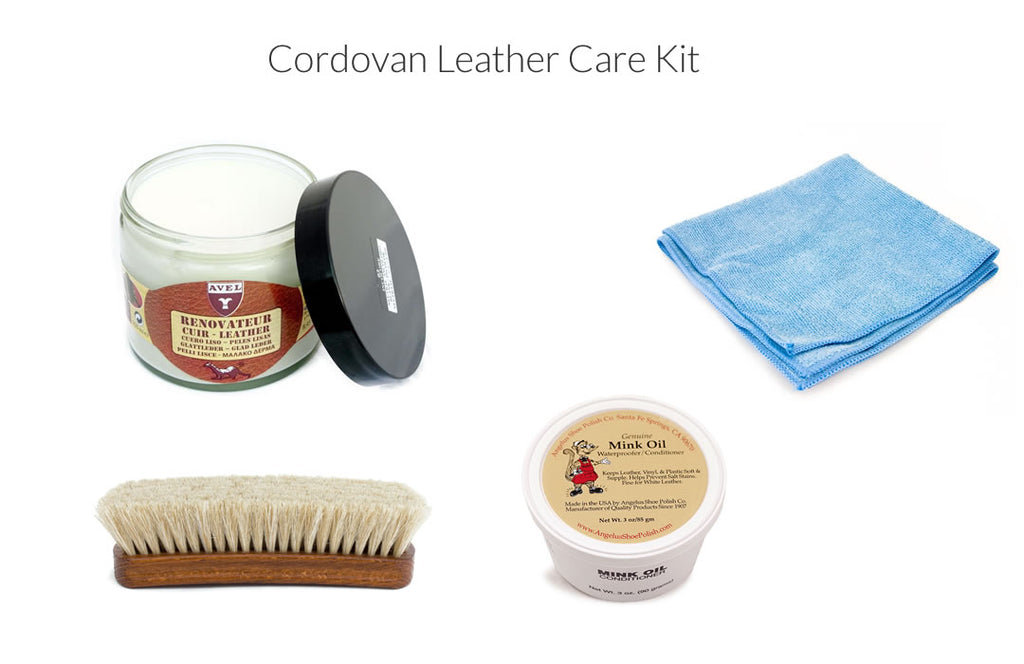Your Cart
Buy one, get one 25% off
Use code SECOND25 when you checkout.
Subtotal
$0 USD
Shipping
Free
Referral Credit
Total
$0 USD
Good quality dress shoes for both men and women are most definitely going to be leather. Our guide below, on the different types of leather, will make it simple to create a care kit that is specific to each type of leather.
Each type of leather will require a slightly different set of tools (read further below). But here are the standard steps to cleaning any type of leather:
In general, keep all leathers out of direct sunlight, direct heat sources (it can cause leathers to change color, lose its suppleness and crack).

Purchase shoe trees - not only do they help in airing out your shoes during storage, it is a vital tool to keep your dress shoes in shape.

Boot Trees: If you’ve spent a fortune on knee-length boots, don’t stick pool noodles in them unless you really cannot buy boot trees. Boot trees adjust to the shape your boots take around your arch and calf and they maintain that shape. Using a cut pool noodle is great, but you can get unnecessary creasing at the ankles and flex points of your boots.
There’s a lot to be said in favour of shoe-horns. These antiquated pieces of plastic/metal/bone do wonders to preserve the back heel shape of your shoe.
There are about 8 common types of leathers that your dress shoes could be made from. If you’re uncertain, simply ask the maker/sales person for more information.
This is the oldest of the ‘modern’ non-chemical tanning methods used to create a smooth, light cinnamon colored leather that is highly favored by cordwainers to create classic dress shoes. They are then sometimes hand-painted and buffed to a patina that is unique to each pair. If they aren’t painted, this type of leather, if looked after correctly, ages wonderfully and acquires a sublimely gorgeous worn-in look. This type of leather requires special care to keep it supple and to preserve its’ color and sheen. It’s best to avoid getting this kind of leather wet as water stains are near impossible to fix.

Your care kit should contain:

This lustrous, slightly oily-touch leather ages well and can really go the distance. If you’re unsure whether or not the shoe in question is pull up leather, do this: find an inconspicuous spot on the shoe and scratch it lightly with your fingernail- Does it leave a mark? Now rub a dry finger over the scratch- Does it disappear? If you’ve answered yes to both these questions, then it’s pull up leather.
Caring for pull up leather is not that complicated and generally just requires a really good leather conditioner and a sealing wax that is preferably beeswax.

Your care kit should contain:

This sheepskin/lambskin leather has a nappy texture and definitely does not do well in water. The process of cleaning ingrained dirt on this type of leather is exactly like that of suede. However, for lightly soiled shoes, our go-to method for cleaning is super simple! Take a lint roller, unroll a fresh round of the sticky paper and roll this all over your shoes, preferably with the pile and not against it. But if you cannot figure out which is with and which is against- then simply keep rolling in one steady direction.

Your care kit contains:

Notorious for being a really fussy leather, suede needs to be treated before you even consider taking out for a spin. With good care, suede doesn’t need to look bleached and aged after a few years of wear. However, it should be noted, that over-cleaning suede tends to ruin the nap of it and that’s precisely what causes the bleached out look. It’s best to keep your blue suede shoes on rotation as constant wear is a definite path to its self-destruction.

Your care kit contains:

Running your hand over your shoes is the best way to feel if you have pebbled leather. It has a pronounced grainy feeling and is the simplest to take care of. Wiping with a damp cloth and feeding the leather with a good oil-based conditioner is enough. Seal the deal with a wax-based polish.

Your care kit contains:

This equine leather is the first choice for most classic bespoke footwear because of its’ high quality and limited supply. It is highly unlikely that you would find shoes made from Cordovan leather in ready-to-wear stores. The biggest mistake you can make is to apply too much wax or conditioner to your shoes which would dull the natural patina and change the color and luster of your shoes. Using the wrong product does not help either. Protect the look of your investment shoes by buying a great quality branded product. Never clean using saddle soap or chemical cleaners. Light brushing and buffing work well to keep it in good nick.

Your care kit contains:

Usually finished with a high shine, frequent maintenance of this type of leather will ensure a long lifespan of your shoes. After sealing it with a wax polish, you might want to buff it to a high shine again with some elbow grease. Simply dipping your polishing cloth into a bit of polish and then immediately into some warm water- not enough to soak, just enough to get a drop or two onto your polish. Work this into the shoe in small tight concentric circles until it starts shining.

Your care kit contains:

Scuff and scratches show up really easily on this type of leather. A little dab of petroleum jelly worked into the scuffs will smooth it out somewhat. If it’s the heel bit of your pumps, then using a bit of clear nail polish will help to protect the heels from being scuffed unnecessarily.

Your care kit contains:
Trust us, the long term benefits of investing in a good care kit outweighs any agony you might experience in putting one together at first. Good shoe care, harkening back to days gone by, is a great way to extend the life of your shoes. After all, you’ve spent good money on them, allow them the chance to serve you for a really long time.
Now that you know how to care for your dress shoes, here's how to make them more comfortable.